Antifungal agent for walls: a comparative review of the best options
Mold on the walls is a common occurrence in modern houses and apartments.Spore formations multiply very quickly and if decisive measures are not taken to remove them, the fungus will spread to the ceiling, floor, furniture and clothing.
To quickly solve the problem, it is necessary to choose an effective antifungal agent for the walls and eliminate the root cause of the appearance of mold microorganisms. We invite you to familiarize yourself with the most effective means of counteracting extremely dangerous biological effects.
We describe in detail how to use effective types of household chemicals, and provide options for the manufacture and use of folk compositions. The material is complemented by visual illustrations and video tutorials.
The content of the article:
Signs and causes of fungus formation
The appearance of fungus on the walls is an extremely unpleasant phenomenon that can negate costly renovations in the apartment.
Mold not only spoils the appearance, it worsens the indoor microclimate and harms human health. Timely identification of the “enemy” greatly facilitates the fight against the fungus.Details about methods of combating dangerous biological phenomena are described in one of articles from our site.
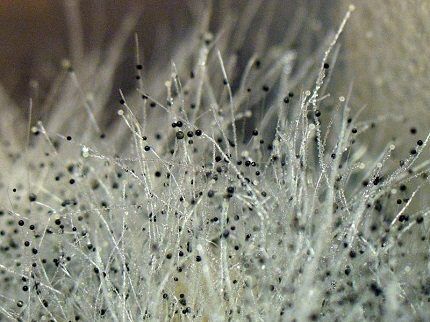
The following signs indicate the presence of fungus in the house:
- the presence of gray, black, dark green dots and spots on the walls or ceiling;
- the appearance of a damp, unpleasant odor in the room;
- peeling paint, wallpaper, crumbling plaster and darkening of tile joints.
Some may notice a deterioration in their health - concentration decreases, headaches become more frequent, and fatigue occurs.
Mold must be removed in a comprehensive manner. Final and irrevocable disposal of the fungus can be achieved by eliminating the causes of its appearance.
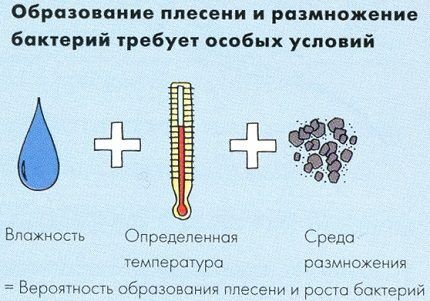
However, humidity and temperature are far from the only factors in the development of harmful microorganisms.
Significant reasons include:
- Lack or insufficient ventilation. As a rule, the fungus begins to develop in the corners of the room - in the place where air stagnation occurs. With sufficient “blowing”, turbulences are formed - the air blows out the spores, and excess moisture is discharged into the ventilation duct.
- Poor quality waterproofing of the foundation. As a result of poor-quality construction, capillary leakage of moisture from the damp foundation occurs - the walls in the house become damp.
- Unsatisfactory condition of the water supply and sewerage leaks. Periodic wetting of the floor, ceiling, walls and utility channels creates a favorable environment for the development of fungus.
- Thin freezing walls. Due to poor thermal insulation, the dew point shifts, and condensation settles on the walls from inside the room.
- Cold attic or leaking roof. This is a common cause of mold on upper floors and attics.
- Improper use of a humidifier. When creating tropical conditions for exotic plants, mold sometimes settles in greenhouses.
Most finishing and building materials can be affected by fungus. Dark spots appear on wallpaper, tiles, wood finishing and plaster.
In addition, mold fungus is capable of settling in household appliances; most often people suffer from its appearance washing machines, dishwashers and microwaves.
Types of fungicidal agents
Most antifungal products for walls contain fungicides - substances of biological or chemical origin that suppress the development of fungi. Active components are added to various building compositions and mixtures to protect structural elements from mold.
Based on their purpose, there are two groups of drugs:
- primers for prevention;
- concentrated compositions for fighting.
Emulsions for prevention. The first group of antiseptics is used when performing repair work - before finishing the walls with a finishing coating. Antifungal primers strengthen the base, increase adhesion, reduce the porosity of the material, remove mold and prevent further development of fungus.
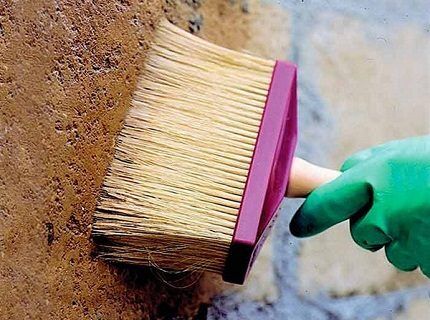
The determining factor in choosing a primer with an antiseptic against fungi and mold is the type of treatment coating:
- strengthening primer - suitable for putty and plastered walls for painting or wallpaper;
- deep penetration primer - optimal for low-porosity substrates (plasterboard, brick and concrete), as well as for finishing with a “heavy” coating, for example, tiles;
- universal composition - treatment of different types of surfaces.
Mold removal concentrates. Products for treating surfaces affected by fungus. The compositions penetrate the structure of the material and destroy mold fungi, lichens and mosses. Many concentrated preparations have a long-lasting effect and prevent re-infection.
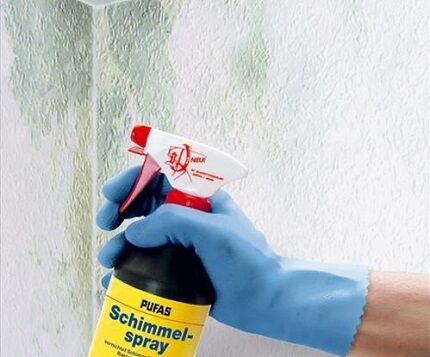
Emulsions for the prevention and removal of fungal formations are developed based on various binding components:
- Latex – the composition does not contain heavy metal salts, so the product is recommended for treating walls in living rooms. An additional advantage is air permeability.
- Acrylic – antiseptic preparations are applicable both indoors and outdoors.
- Alkyd – emulsions are often used to treat wooden substrates.
The release form of primers and concentrates is a ready-to-use liquid. In order to prevent fungal formations, the concentrated emulsion can be diluted with water.
Primers for prevention
To prevent the appearance of mold in damp rooms at the stage of repair and construction work, it is advisable to use primers with antiseptic properties.
#1: Milkill – processing brick and concrete
Milkill is a latex emulsion, the active ingredient is a biocide that destroys fungal and mold spores. Designed for preventive treatment of finely porous and low-absorbent surfaces after performing waterproofing before finishing work.
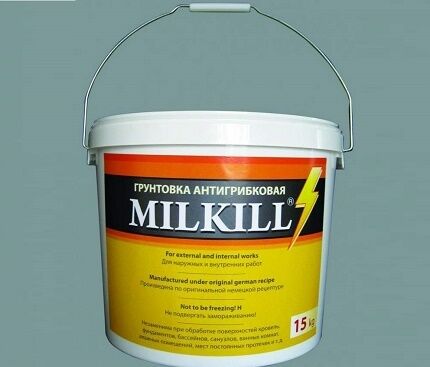
Characteristics and features of the use of the Milkill composition:
- consumption per layer – about 250 g/sq.m;
- It is recommended to apply 2-3 layers;
- penetration depth of the drug – 1-5 mm;
- complete drying time – 24 hours;
- white emulsion with a pungent odor;
- Suitable for work inside and outside the house.
The composition of the primer is not uniform, so it must be mixed well before use. Work is carried out in above-zero temperatures (5-30°C).
#2: Acryl Grundierung – deep penetration composition
Acryl Grundierung (Olimpic) is a deep penetration acrylic primer with antifungal and antibacterial properties. The product is excellent for treating concrete and brick walls for puttying, facade or interior painting, as well as applying decorative plaster.
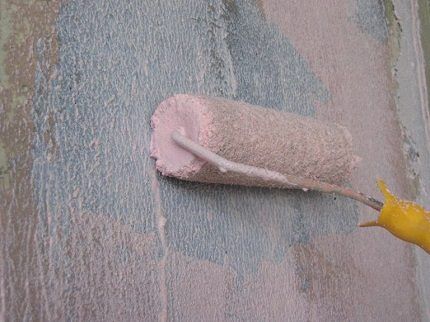
Technical and operational characteristics of Acryl Grundierung:
- practical material consumption per layer – 1 l/15 sq.m;
- drying period – 1 day;
- It is permissible to apply any type of water-based paint on top of the primer;
- “working” temperature – 5-35°C.
The use of the composition significantly reduces paint consumption, reducing the absorbency of the surface. Antibacterial primer should not be poured down the drain.
#3: Schimmelstopp Dufa – fungicidal additive
The highly concentrated Schimmelstopp Dufa primer is used as an additive to synthetic plasters and facade, water-borne dispersion paints. The concentrate has a long-lasting protective effect against mold, mildew and algae.
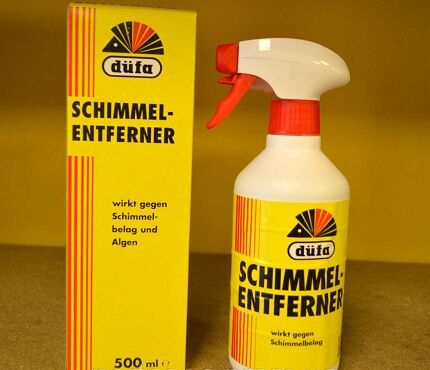
Technical information:
- the contents of the container are enough for 25 kg of plaster or 10 liters of paint;
- the product cannot be used at air or object temperatures below +5°C, on the eve of frost, during rain and on very hot surfaces;
- at a temperature of +20°C and air humidity of 65% dries within 4 hours.
After adding primer to paint or plaster, the mixture must be thoroughly mixed. The prepared composition is applied to a cleaned and dried base.
#4: Mixonit GR43 – wide spectrum of action
The universal deep penetration soil Mixonit GR43 is used as an additive to dry construction mixtures (plaster, putty and grout). The product is applied to mineral coatings with high absorption capacity.
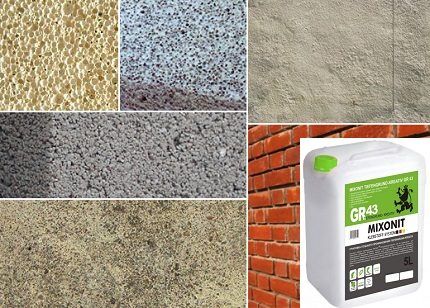
Advantages of using Mixonit GR43 antifungal emulsion:
- no unpleasant odor;
- vapor permeability – a “breathable” protective layer is formed;
- deep penetration – up to 10 cm;
- preventing the appearance of mold, fungi, bacteria and algae;
- reduction of paint and varnish consumption;
- drying speed – 3-4 hours;
- resistance to repeated freezing.
The disadvantages of soil include the inability to use it on substrates that do not absorb moisture.
Application of 1-2 layers is recommended. On loose surfaces, you must adhere to the “wet” method - the next layer of emulsion is applied to the previous one that has not dried.
Antifungal agents for wood
Wood is the most susceptible material to mold. It must be treated with insecticides. A tree damaged by fungus is destroyed very quickly. Therefore, surface treatment must be carried out annually as planned.
#1: Dufa-Holzlasur – glaze for wood
Dufa-Holzlasur is a thin-layer, decorative glaze for the restoration of old and protection of new wooden surfaces. The moisture-regulating and water-repellent coating protects the wood from the negative effects of precipitation.
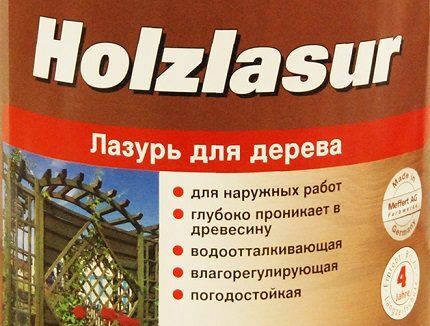
Characteristics of Dufa-Holzlasur:
- binder – alkyd resin;
- scope of application – external treatment of wooden surfaces;
- consumption and number of layers depend on the desired coloring result;
- wide palette of tinting shades;
- Drying time – 4 hours.
Holzveredlung antiseptic is an analogue of Holzlasur primer. The only difference is that the Dufa-Holzveredlung glaze creates a glossy finish.
#2: Baramon C30 – stable impregnation
Baramon C30 is a fungicide for wood treatment.After application to the surface, the drug crystallizes within two days and is subsequently not washed away. The product protects wood from fungi, mold, bacteria, algae and small insects.
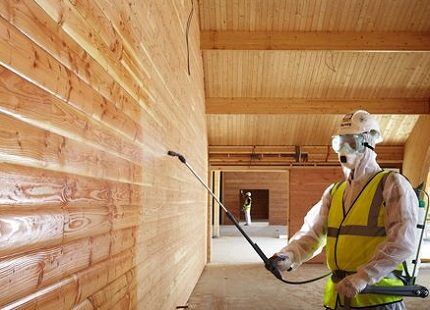
Recommendations for using the fungicide:
- the concentrate is diluted with water in a ratio of 1:6, respectively;
- emulsion consumption: 0.2 l/sq.m when processing wood inside the house, 0.3 l/sq.m – for outdoor structures;
- within two to three days after applying the product, the surface of the material must be protected from water;
- Baramon C30 is not suitable for tree species that cannot be impregnated, such as oak.
Contact of elements treated with fungicide with food is unacceptable. The concentrate does not increase the flammability of wood.
#3: Pinotex Base – treatment of external walls
Pinotex Base is an alkyd-based antiseptic primer. It is used for exterior work for treating wooden facades, fences, windows and doors before painting. Active substances create a “barrier” against mold, rot and blue stains.
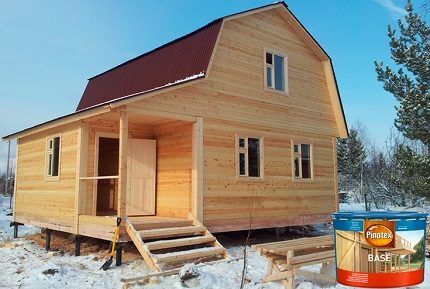
Properties and application features of Pinotex Base:
- the product penetrates deep into the wood structure;
- increases adhesion of finishing to the surface;
- prevents fungal infections;
- During processing, the wood must be dried - the maximum permissible humidity is 20%;
- impregnation does not require dilution with water;
- solution consumption for sawn wood is 4-8 l/sq.m, for planed wood – 6-10 l/sq.m;
- Drying time – 12-24 hours.
It is not advisable to carry out work in windy or hot weather - active evaporation of the solvent prevents normal absorption of the primer. Pinotex Base is flammable, so it is prohibited to use open fire or smoke near the treatment.
Emulsions to combat mold
You can fight annoying mold using special means or traditional methods. The first option is more effective, and the second is affordable and harmless to humans. In difficult situations, both methods should be combined.
#1: Ceresit CT 99 – long-lasting action
Antifungal solution Ceresit CT 99 is one of the most popular drugs for combating mold, fungi, lichens and destroying microorganisms. The product is environmentally friendly and can be used for interior work and for treating structures outdoors.
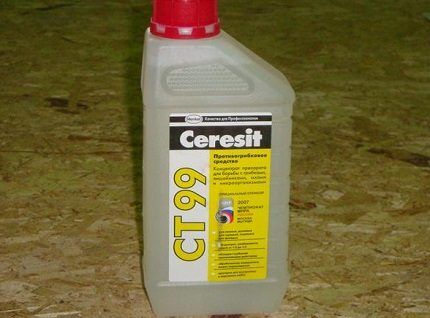
Technical characteristics of Ceresit CT 99:
- active antiseptics – organic biocides;
- does not contain heavy metals;
- no traces remain on the surface after treatment;
- the drug is vapor permeable;
- application temperature – up to +40°С, but not lower than +5°С;
- Complete drying time is 4-5 hours.
Before use, the drug must be diluted with water, maintaining a ratio of 1:2 to 1:5 - the ratio depends on the degree of damage to the wall. The solution is applied only with a brush; spraying is not permitted.
#2: ABEDIS 06 – removal of organic plaque
Antifungal Abedis 06 copes with organic plaque on walls, fights fungal mold in the bathroom, in the kitchen and adjacent rooms. An important advantage of the drug is its versatility. Abedis 06 is effective on brick walls, glazed and ceramic tiles, stone cladding, plaster, terraces and concrete paths.
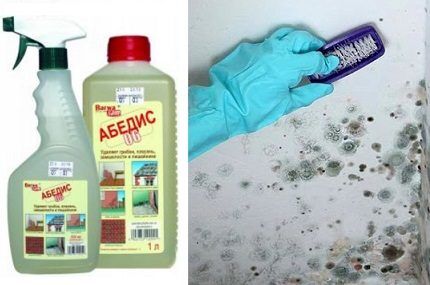
Features of the action and use of the drug:
- after use, the risk of mold reoccurrence is reduced;
- before application, the concentrate is diluted with water in a ratio of 1:2;
- After 24 hours, the treated wall should be washed with water and dried;
- In case of severe fungal damage to the walls, it is recommended to repeat the procedure after 36 hours.
Consumers note a long-term positive effect after cleaning the surface with an antifungal composition.
#3: Dali – universal antiseptic
Dali is a universal remedy, highly effective against various biological parasites. It is actively used as a preventive treatment of walls before painting paintwork, as well as to remove emerging fungus, blue stains and mold.
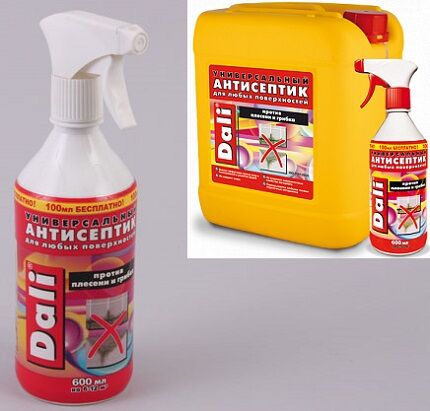
Disinfection tactics and concentrate consumption depend on the purpose of treatment:
- Prevention. The surface is cleaned of dirt and covered with a layer of antiseptic at the rate of 50-100 ml/sq.m.
- Removal of biological lesions. Remove visible colonies of fungi and mold, wipe and dry the wall. Treat with Dali, using 50-250 ml/sq.m. After 6 hours, repeat the procedure.
During work, safety precautions must be observed. Use protective clothing, a respirator, safety glasses and gloves. The room should be well ventilated.
#4: Fongifluid Alpa – “treatment” and prevention
Fongifluid Alpa is a fungicidal solution that destroys the source of biodestruction of the wall and prevents re-infection.
Duration of action is about two years. After applying the concentrate, the coating retains the ability to “breathe”, so the microclimate in the room does not deteriorate.
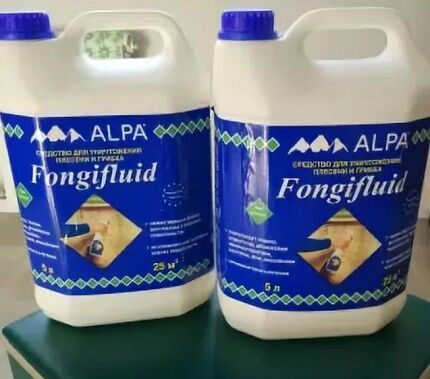
Characteristics of Fongifluid Alpa:
- the solution is ready for use;
- drug consumption – 1 liter per 4-5 sq.m;
- The surface dries after 6 hours, the base can be painted after 6 days.
The antifungal solution is highly effective against a large number of microorganisms. The product does not change the color, gloss or texture of the surface.
Traditional methods against mold
If the extent of damage to the walls is insignificant, then further spread of the fungus will be prevented using available means.
The video presents a test experiment on the effectiveness of various folk methods for removing mold from walls:
Method 1. Bleach. The composition of “whiteness” and similar preparations includes sodium hypochlorite. The component has a detrimental effect on many types of fungi and mold spores. Disadvantages of the method:
- chlorine corrodes the surface and can ruin the finish of the walls;
- the active substance works superficially - the fungus remains inside the material;
It should be remembered that working with bleach is unsafe for human health.
Method 2. Bleach paired with baking soda. In addition to these main components, you will also need liquid soap and a few drops of an essential oil that is pleasant to you personally. In general, preparation and use are not difficult to cope with:
Those who wish directly clean the bathtub white and put your plumbing in order, you will find a lot of very useful information on our website.
Method 3. Vinegar. An acidic environment is harmful to many bacteria. Table vinegar is non-toxic, but produces a strong odor. This drawback can be easily eliminated by ensuring sufficient ventilation.
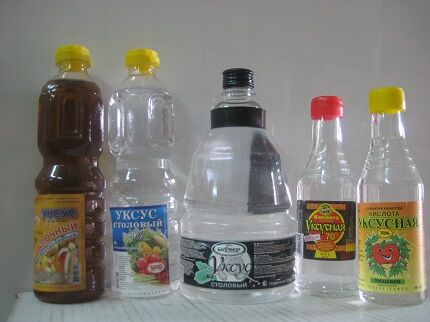
Method 4. Hydrogen peroxide. The solution has antiseptic and antifungal properties.Treatment with a 3% composition is effective, but is fraught with the appearance of stains on the wall - peroxide bleaches the coating.
To apply the product, it is advisable to stock up on a spray bottle:
Method 5. Baking soda. The simplest and safest method is to simply spray the wall with a soda solution (1 teaspoon of sodium carbonate per liter of water). After 1 hour, wipe the surface with a dry cloth. It is not necessary to remove the remaining solution - the soda will prevent the re-formation of the fungus.
Method 6. Borax (aka sodium tetraborate). The use of natural cleaning products is a priority in terms of maintaining a clean environment.
Borax can be purchased without problems and prescriptions at any pharmacy at a very affordable price.
Method 7. Ammonia. In this case, no additional funds or drugs will be required, although the cost of ammonia cannot be called the most budgetary.
It is strictly forbidden to mix ammonia with bleach, so as not to be poisoned by the extremely toxic gas formed when these chemicals combine.It is also unacceptable to add to household cleaning products based on chlorine or ammonia, for example, to window cleaning liquids.
Conclusions and useful video on the topic
The video will introduce you to the reasons for the appearance of mold, the prerequisites for its appearance, as well as methods of combating and preventing this negative phenomenon:
To achieve a positive result in the fight against mold, it is necessary to eliminate the root cause of its formation and select the optimal antiseptic. To avoid the re-development of microorganisms, it is important to restore air circulation in the room and ensure dry walls.
Would you like to share your own effective method of combating black mold or have questions while reading? Please leave a comment in the block located below the text.




From my own experience, I can say that you need to fight not the mold itself, but the reasons for its appearance. Otherwise, the effect of all means will be short-lived. By the way, there are mainly problems with windows, which seal rather poorly when installed. Moreover, the owners themselves forget to seal the outer joint between the window and the building, leaving the polyurethane foam exposed there. After solving such problems, it is necessary to treat with antifungal solutions.
I would like to clarify: is it possible to deal with long-standing mold in the bathroom? We moved into a new apartment in 2008, and there was already black mold in the joints in the bathroom. Until now, nothing has been done, and the mold has not grown. Does it make sense to fight this mold or is it better to completely renovate the premises? And will repairs help in this case? Our bathroom is lined with clapboard.
Mold penetrates the wood very deeply, almost right through the lining. It will probably be easier to make repairs. In general, live with mold for 10 years and do nothing, you have to figure it out...
Hello! First, you need to remove the mold that is currently present, thoroughly and cleanly. There is a good remedy for this, called “Abedis”, I highly recommend it.
Further: most often the cause of mold formation is the lack of normal ventilation in the bathroom. I advise you to do forced ventilation. And it’s best to set it up so that it turns on with the light. That is, you bought it and let the hood work for another 10-15 minutes so that there is no steam, which increases humidity, creating an ideal environment for the formation of mold. And once every three months, do not forget to carry out prophylaxis with the same Abedis solution.
If you are concerned about the constant formation of mold in the bathroom, then removing this infestation is just treating the symptom, so to speak. Yes, you can choose a good remedy that will correct the situation, but you need to take care of normal ventilation in the bathroom.
First of all, install supply valves on the door to the bathroom. They come in different shapes and sizes, I have attached a photo. It may be necessary to install a hood with forced ventilation. There is nothing complicated about this; it can be easily combined with a duct for exhaust from the kitchen, for example. In this case, the humidity in the bathroom will be within normal limits, so mold will not form if you eliminate all outbreaks first, of course.
Hello.You have lived with mold for so many years 🙁 Make repairs immediately and eliminate the cause of mold growth. In our previous house, the children started coughing and we couldn’t do anything to cure the cough. It turned out that a dew point had formed on one of the walls under the gypsum board and black mold had appeared. And we breathed and coughed on it.
DD. Our ceiling and walls in the bathroom (shared bathroom) are very badly affected by fungus. They wrote here that you can treat it with peroxide. Can I treat it with peroxide first, and then with some other product? I want to install a hood, please advise which one is better.